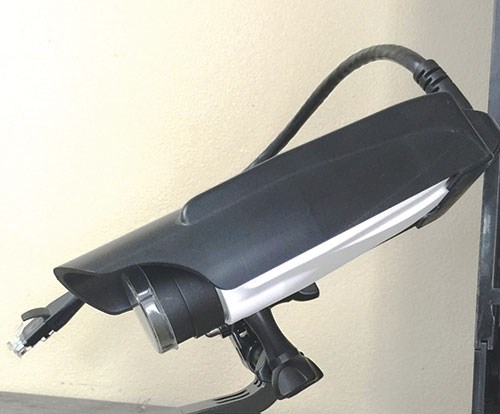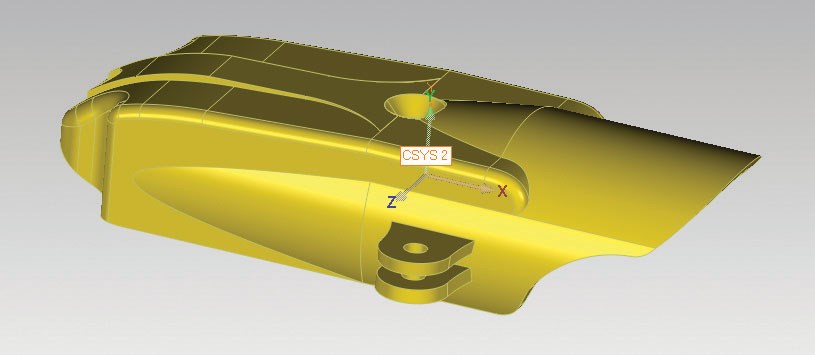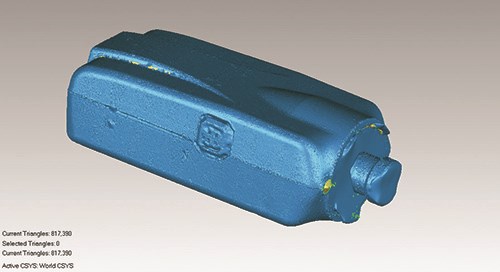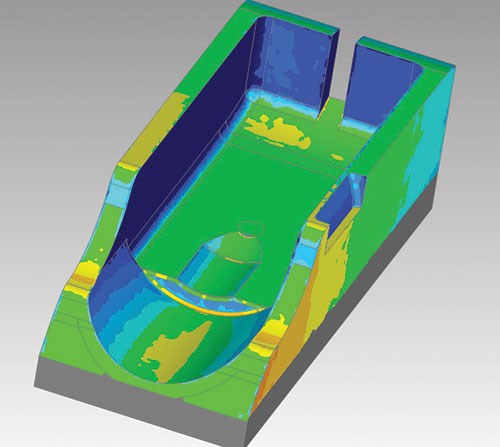From Bottleneck to Project Accelerator
Laser scanning provides new inspection options and a faster alternative to CMM for this engineering and mold manufacturing company.
The low-slung, elongated, ranch-house-style building on the outskirts of Rutledge, Georgia, (population 780) doesn't look like the headquarters of a high-end manufacturing operation, but looks can deceive. This 35,000-square-foot facility is home to Versatile Mold and Design, which provides tool engineering and manufacturing for companies including Schneider Electric, Eaton Electrical, GE, Siemens and Husqvarna. The company also has an office in Shenzhen, China, that supports offshore work.
During the past two years, Versatile Mold and Design has spent nearly $2 million in new cutting, EDM, laser welding and grinding technologies. One of the best investments, says company President Bob Heusser, was a Surveyor Series 3D laser scanner from Laser Design Inc. By speeding inspections, this system has significantly improved turnaround times for new projects. It’s also opened the door to new measurement applications that have reduced dimensional corrections for new tooling.
Weeks to Days
The Laser Design Surveyor 3D scanner used by Versatile has an accuracy of ±0.010 mm. The system’s speed is also particularly critical for the shop—setting up a new part scan takes only a few minutes. Programming is virtually automatic because the system uses part manufacturing information (PMI) data that designers include in the CAD model. This enables virtually anyone to use the system. “The automation removes the need for a 3D scanning specialist,” explains Marty Schuster, president of Laser Design.
With the scan complete, the system’s embedded inspection software compares the 3D data to the CAD model and automatically extracts all geometric dimensioning and tolerance (GD&T) data. Along with fast, automated programming, this capability makes laser scanning a faster alternative to a CMM for much of the shop’s work. “Our inspection process before was slow,” explains Trevor Martin, quality control technician at Versatile. “You had to pick the points manually and put all of the data into an Excel spreadsheet, which can take weeks depending on how many dimensions there are in your part. The Laser Design Surveyor enables us to scan the part automatically and capture hundreds of thousands of points instead of a few dozen. You can select points and it automatically gives the dimensions. With one click of a button, all of our data is exported to an Excel spreadsheet. With a CMM, if you have a four-cavity tool, you have to check each part (cavity) individually. With the 3D laser scanner, you check one cavity and run the automation on the other three cavities, and your inspection is done.”
The ability to capture millions of points faster and more accurately, and automatically integrate them into a spreadsheet has turned weeks of inspection into days, Martin says.
Getting it Right the First Time
Versatile’s use of the laser scanner goes beyond first-article inspection. The company is also applying the system to inspect sinker EDM electrodes prior to burning any steel.
This is a particularly valuable capability, because a complex mold might require dozens of electrodes with intricate shapes and myriad depths. Prior to laser scanning, the company had no way to check every aspect of an electrode to eliminate mistakes before manufacturing. “This is an incredible pre-check, as carbon is much cheaper than steel,” says Rus Emerick, director of application engineering for Laser Design. “Versatile realizes the value in burning steel right the first time rather than finding out an insert or mold is incorrect only after parts have been molded.”
An Elegant Solution
A recent project for Utility Inc., a provider of real-time data acquisition systems for mobile operations such as transit systems and law enforcement, is a case in point for how 3D laser scanning helps accelerate product development and ensure part quality. Versatile provided all the plastic parts for Utility's Rocket vehicle router, a system used by police departments to provide a continuous video feed from squad cars to headquarters.
One major challenge was creating a mold for the video camera cover. “The design needed to be integrated with the existing mold of the camera and not appear as an afterthought or a kludgy quick fix,” says Ted Davis, president and chief technology officer for Utility. “The elegant design was a joint effort between Utility and Versatile Mold. “From design to first article, it took about eight weeks. The outcome couldn't have been better.”
Versatile scanned the Utility camera, then reverse-engineered the scan to produce a CAD model of the camera. Based on that CAD model, Versatile’s engineers designed a perfectly fitted cover and mount for the camera. “We needed to match the housing geometry of the cover to the camera, and highly accurate 3D scanning was the only way to do that,” Martin says.
The scanner was also employed to confirm the accuracy of electrodes against the CAD model prior to burning certain features into the mold. Sample parts produced by the mold were also laser-scanned and compared to the 3D model for accuracy. “3D scanning using the Laser Design Surveyor system saved significant time and validated not only the fit, but confirmed the overall look of the final product,” Davis says. “Only one SLA (additive) prototype was required, thanks to 3D scanning validation. This allowed for an accelerated project and reduced the total cost as well.”
New Business Generator
The Laser Design Surveyor’s accuracy, speed and ease of use have made a signifi-cant impact on Versatile’s bottom line. In fact, the company believes it recouped the initial cost of the system—approximately $150,000 for machine and software—in about a year by speeding project turnaround time and eliminating mold errors.
Along with other investments made during the past two years, the system has helped gain approval for moldmaking by major medical device industry companies, the shop reports. These include Covidian, Medtronics, Vention Medical, Med Tech of Georgia and Nypro Healthcare.
Other customers have also taken note of the shop’s increased capability. Utility is just one example. “Versatile has become a more efficient organization, both from design and production standpoints over the years, expanding its facilities and investing in technology in order to keep pace with demands,” Davis says. “We are very demanding of our suppliers, and Versatile Mold and Design stands out as a trusted partner that has helped make our rapid growth possible.”
Contributor: Bob Cramblitt writes about design and engineering technologies that transform the way we live, work and create. He can be reached at info@cramco.com.
Related Content
How to Improve Your Current Efficiency Rate
An alternative approach to taking on more EDM-intensive work when technology and personnel investment is not an option.
Read MoreTolerancing in Mold Design, Part 1: Understanding the Issues of Conventional Bilateral Tolerancing
Mold designers must understand the location, orientation and form limitations of conventional tolerancing before changing to another dimensioning system.
Read MoreHow a Small Programming Change Cuts Cycle Time in Half
Overriding the CAM system when milling a series of lifter pockets helps to improve metal removal rate and increase feed rates.
Read MoreThree Good Reasons to Switch from Three- to Five-Axis Machining in Moldmaking
Five-axis machining technology is a great tool in the moldmaker toolbox.
Read MoreRead Next
How to Use Continuing Education to Remain Competitive in Moldmaking
Continued training helps moldmakers make tooling decisions and properly use the latest cutting tool to efficiently machine high-quality molds.
Read MoreReasons to Use Fiber Lasers for Mold Cleaning
Fiber lasers offer a simplicity, speed, control and portability, minimizing mold cleaning risks.
Read MoreAre You a Moldmaker Considering 3D Printing? Consider the 3D Printing Workshop at NPE2024
Presentations will cover 3D printing for mold tooling, material innovation, product development, bridge production and full-scale, high-volume additive manufacturing.
Read More


























